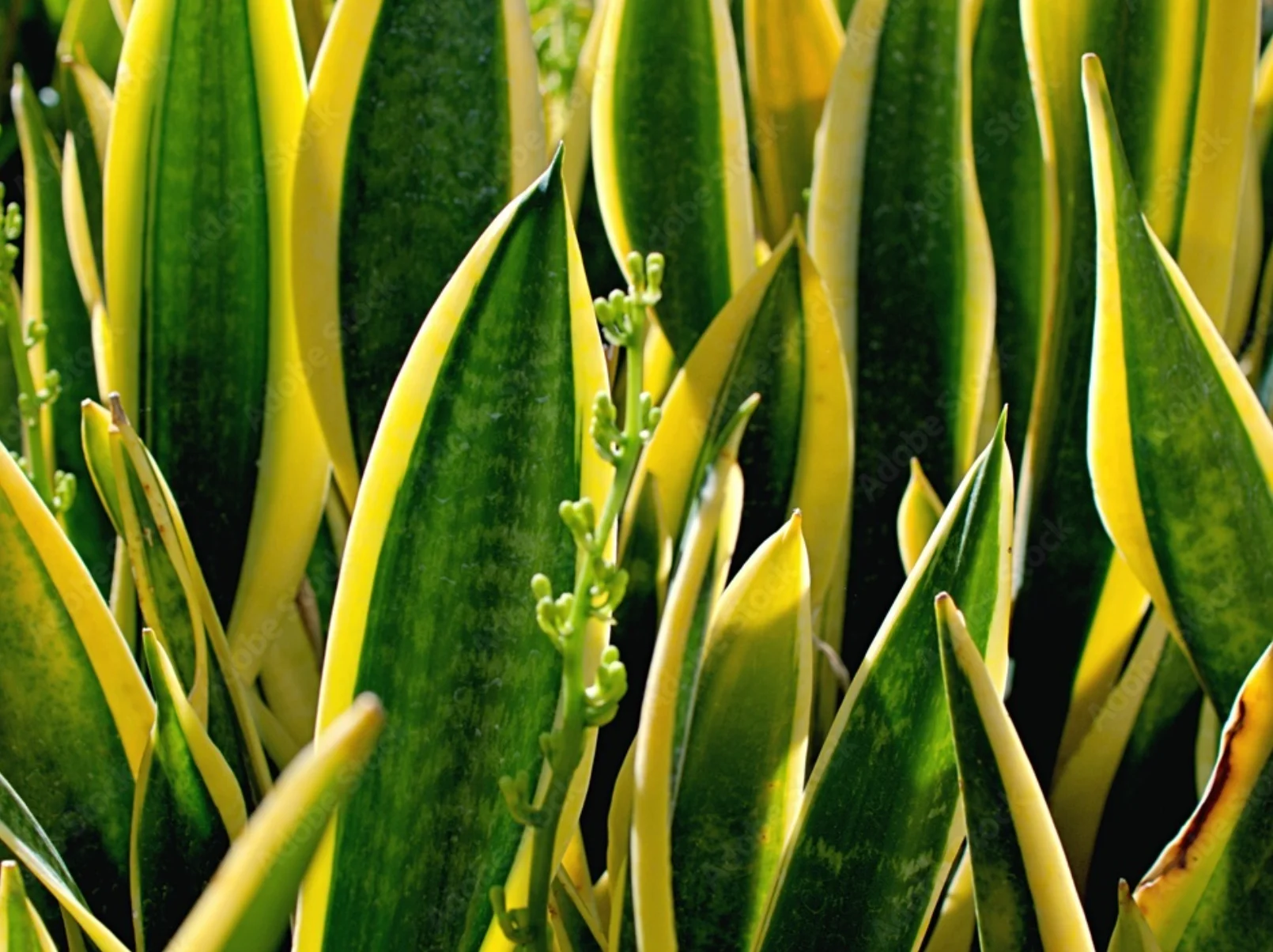
Dracaena trifasciatan
Dracaena trifasciatan
Dracaena trifasciata belongs to flowering plant species. It is native to tropical West Africa mostly found from Nigeria east to the Congo. Dracaena trifasciata is also common by the name of the Snake plant. Moreover, the other names are Saint George’s Sword, mother-in-law’s Tongue, etc.
Common Names of Dracaena trifasciata
Dracaena trifasciata is well known by different names based on different areas. It is well known by the name because of its leave shape and sharp margins:
- Mother-in-law’s tongue
- Saint George’s sword
- Snake plant
- Viper’s bowstring hemp (As its plant fibers are used to make bowstring).
Explanation Dracaena trifasciatan
Dracaena trifasciata is an evergreen perennial plant. Which is forming dense stands, spreading by the way of its creeping rhizome. Its rhizome is something above the ground and sometimes below the ground. From the basal rosette, the stiff leaves grow vertically.
Size and Shape:
Color:
Mature leaves are dark green with light gray-green with cross-banding.
Using the crassulacean acid and metabolism process these plants exchange oxygen and carbon dioxide. This process allows them to withstand drought. Stomata are the microscopic pores on the plant’s leaves which used to exchange gases. Stomata are opened only at night to prevent the water from escaping by the evaporation process in the hot sunlight. Moreover, in some parts of Northern Australia, it is a weed. It is difficult for these plants to bloom outside of their natural and proper environment. Mostly, it contains a sticky and non-fragrant texture but some are fragrant at night.

Dracaena trifasciata Varieties
It contains different varieties; those are given below:
- Laurentii:
- This cultivar has lovely mottling on the centers of the leaves including the yellow stripes with leaf borders.
- Dracaena trifasciata “Moonshine”:
- It includes beautiful silvery-green leaves. The foliage will turn a darker green color if you keep this plant in a darker area. With the passage of time and age, the leaves turn darker naturally.
- Dracaena Masoniana:
- It makes a statement in any collection. It is commonly known as the Whale Fin plant with enormous leaves. Its growing speed is plodding as 1 leaf every 1.5 years or so takes to grow.
- Dracaena Masoniana Variegata:
- It is the variegated kind of the Whale Fin Plant. However, its vertically pale-yellow stripes are very attractive and lovely.
- Dracaena Samurai Dwarf:
- This is a short-growing species. Its size is about 4-6 inches tall. It grows in the alternative pattern as a V shape, making it unique and different from other snake plant species. Do not expect this one to budge much because it is extremely slow-growing.
- Dracaena trifasciata ‘Hahnii’: It can easily grow anywhere from about 6 to 12 inches at the most. Commonly known by the name of Bird’s Nest Snake Plant. Also, it is another short-growing species.
- Golden Hahnii: It is the variegated version of the Hahnii and it is among the most beautiful Dracaena plants. It contains low-growing rosettes including pretty and creamy-yellow margins on the foliage.
Care for Dracaena trifasciata
Following are the caring guide for the best grooming of Dracaena Plants;
- Grow the snake plant in bright light or partial shade.
- It is best in loose and well-draining soil.
- Give the water to the snake plant only when the soil dries.
- It does not require extra humidity and the plant thrives in temperatures between 70 Fahrenheit for 90 Fahrenheit.
Benefits
Following are the major benefits of the snake plant:
- It is a houseplant that helps to clean the air.
- A NASA study proves that it is helpful to remove household toxins from the household air.
- The snake plant eliminates xylene oxide, benzene, and formaldehyde, among the airborne chemicals.
How to propagate in Water?
You can easily propagate snake plants by taking a leaf cutting and rooting it in water.
- Put a jar in a sunny location.
- Protect the jar from direct sunlight.
- Change the water every few days which helps to prevent disease.
- When roots appear then transfer the rooted lead by cutting to an appropriate potting mix.
Can I Cut the brown tips, Snake Plant?
Yes, you can. But remember only cut the brown tips of your snake plant if there is minimal damage. Note that brown tips on the snake plant leaves that have been cut off will not grow back. Also, remember that sometimes, cutting the leaves can cause more harm to the plant.
The best solution is to cut the whole leave at the soil line which will improve the plant’s appearance.
Snake Plant’s leaves turning yellow
Snake plants turn yellow for two reasons:
- Overwatering
- Too much direct contact with sunlight
Note that these plants do not require too much water to survive. Water them when the soil is dry. Must ensure that the snake plant does not get too much direct sunlight as intense sunshine scorches the leaves.
Soil Selection
Always select the well-drained soil mix for your plant. The suggestion is to plant these plants in sandier, loose soil that has good drainage properties. Note that these plants have arid African roots, hence keeping them away from overwatering. Use Cactus Soil to grow these snake plants which is preferred by most growers. Also, prepare or buy a potting mixture that has low peat and use a container including the drainage.
Watering/Water
For Amateur gardeners, this tolerant plant is perfect. Watering is the basic and major character of plant care. Remember, there is no single schedule used to water the plants it varies according to the sunlight amount and whether.
If you forget to water the snake plant then it will give you a tough time. Paying no attention to the watering process may cause your snake plant to turn yellow or brown.
In Summer and Spring, you should allow a few inches of soil to dry before starting watering. But you must have to water the snake plant in winter once a month or two.
Light required for Dracaena trifasciata
As compared to the other household pants it requires dim light. However, bright and filtered sunlight is the best solution for any plant to grow properly day by day.
Temperature
Higher than 50 degrees Fahrenheit or 10 degrees Celsius is the best solution to groom your Dracaena trifasciata.
So, here we provide any basic and useful factors required to grow snake plants. If you have any suggestions or questions then you may ask. We are here 24/7 available for your help.
Dracaena trifasciatan.




